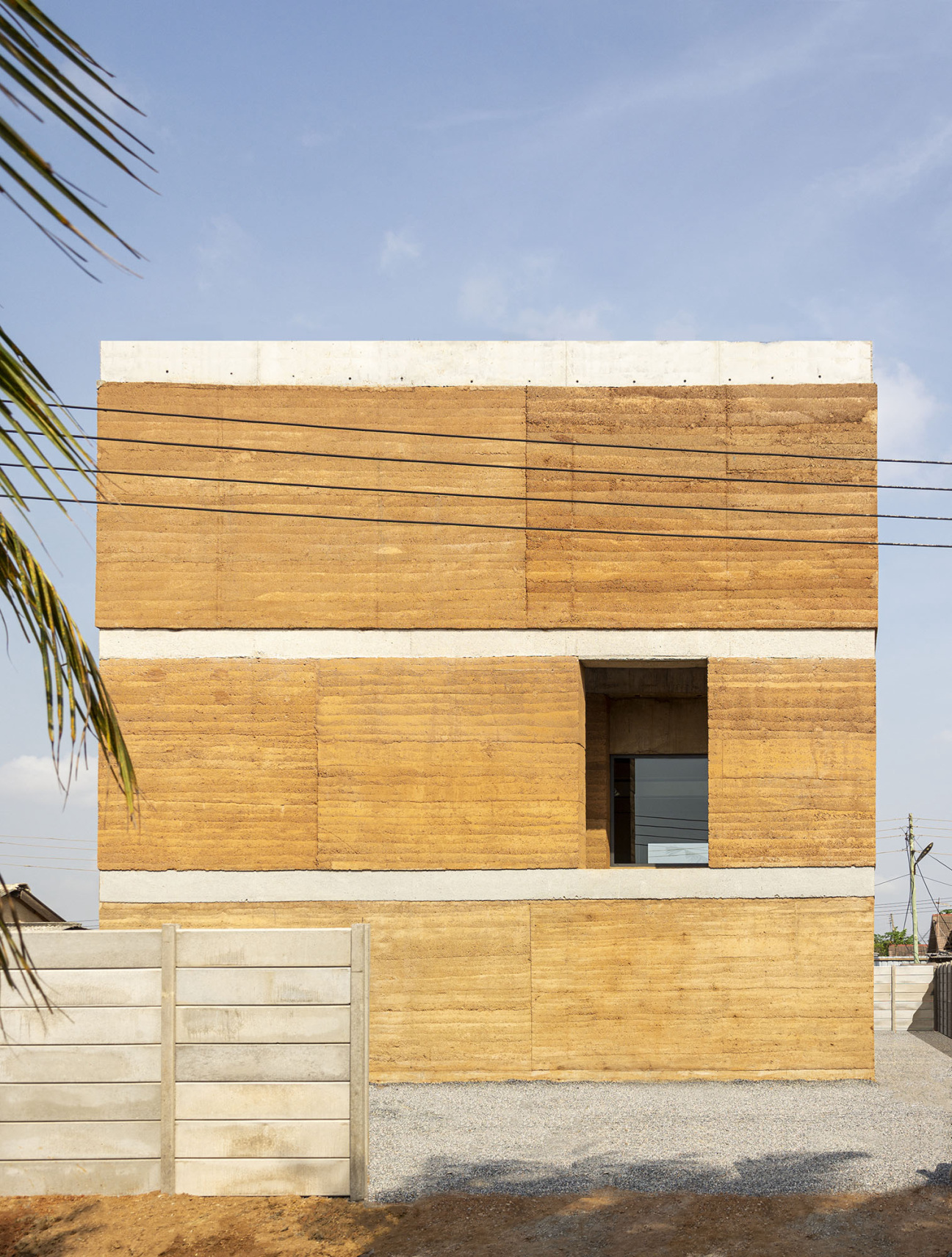
Next week Ghanian-born, Austria-based painter Amoako Boafo will debut dot.ateliers, Accra’s latest artist residency and art exhibition space. The three-story structure designed by David Adjaye is an “architectural tool” for sustainable design for the community-guided project that serves as a multifaceted space for incubation, mentorship, and gathering. Dot.ateliers opens with “Homegrown,” a solo exhibition of Boafo’s works curated by Aindrea Emelife that reflects on the artist’s relationship with his hometown, and will be followed with a group exhibition curated by Akworkor Thompson, “Side by Side,” in January.
Essence Harden: Can you walk us through the development dot.ateliers, which officially opens next week?
Amoako Boafo: It was born on the back of collaborations and community. I view it as an extension and a formal version of the “incubator” that currently exists in my personal studio, where I invite other artists to create and to offer avenues for exchange and support.
EH: How did the idea blossom?
AB: Growing up, I longed for a space where I could express myself creatively within my community. I needed support to do so and access to interdisciplinary dialogs and educational materials to help me on my chosen path. As I gained exposure later on and experienced my own possibilities, I started to create space for others within my community.
EH: Other than being your home, why else did you decide to establish residency in Accra?
AB: There is a major need for non-commercial creative spaces here—somewhere the youths can go to be inspired and develop their creativity and pursue their talents instead of engaging in other activities…The development of a supportive infrastructure and a safe place was a necessity.

EH: Sustainability in both material and engineering informed every aspect of dot.ateliers’s construction. Can you talk more about your vision and collaboration with Adjaye on the project?
AB: I needed a passionate artist who is obsessed with his craft and is able to understand and interpret my need for authenticity, quality, and sustainability for this project. It’s very similar to the qualities I look for in artists [that participate]. This search led to my connection to Sir David Adjaye, whose design made my vision and this project a reality.
EH: Your inaugural residence for 2023 includes Zandile Tshabalala, Clotilde Jiménez, M. Florine Démosthéne, Crystal Yayra Anthony, and Dzidefo Amegatsey. How does this group set the stage for both materials used and theories engaged for the type of art they produce?
AB: The inaugural cohort is a reflection of how I envisage the residency, which caters to the various stages of an artist's creative career. Zandile is a painter and an established artist whose works touch on the Black body and its representation and the feelings of a confident black woman juxtaposed, while Crystal’s work touches on intimacy and vulnerability of her generation in non-sensual compositions of bodies in the nude. Aside from dot.ateliers, which is the artist residency program, there will also be a writers and curators residency and the Koolake Fellowship (named after my grandmother), which will admit only women fellows.
EH: How do you envision cohorts of the artist residency existing within the space?
AB: I hope it is an avenue for exchange where artists can work and learn from each other while benefiting from sharing their experiences. For example, [it could be] a place where mid-career artists can relearn and regain some of the simplicity and rawness that developing artists have.
EH: There's an incredible amount of collaboration with Ghanaians in the Diaspora and Black diasporic artists and cultural workers in the overall vision of dot.ateliers. How important was that to your mission?
AB: Sometimes I’m so focused on producing, I’m not always concerned with some of the greater contexts. But I am indeed grateful for the connections I have on my journey, and I am very grateful for their support and partnership. Nothing good in life is done without the support of others.










 in your life?
in your life?

